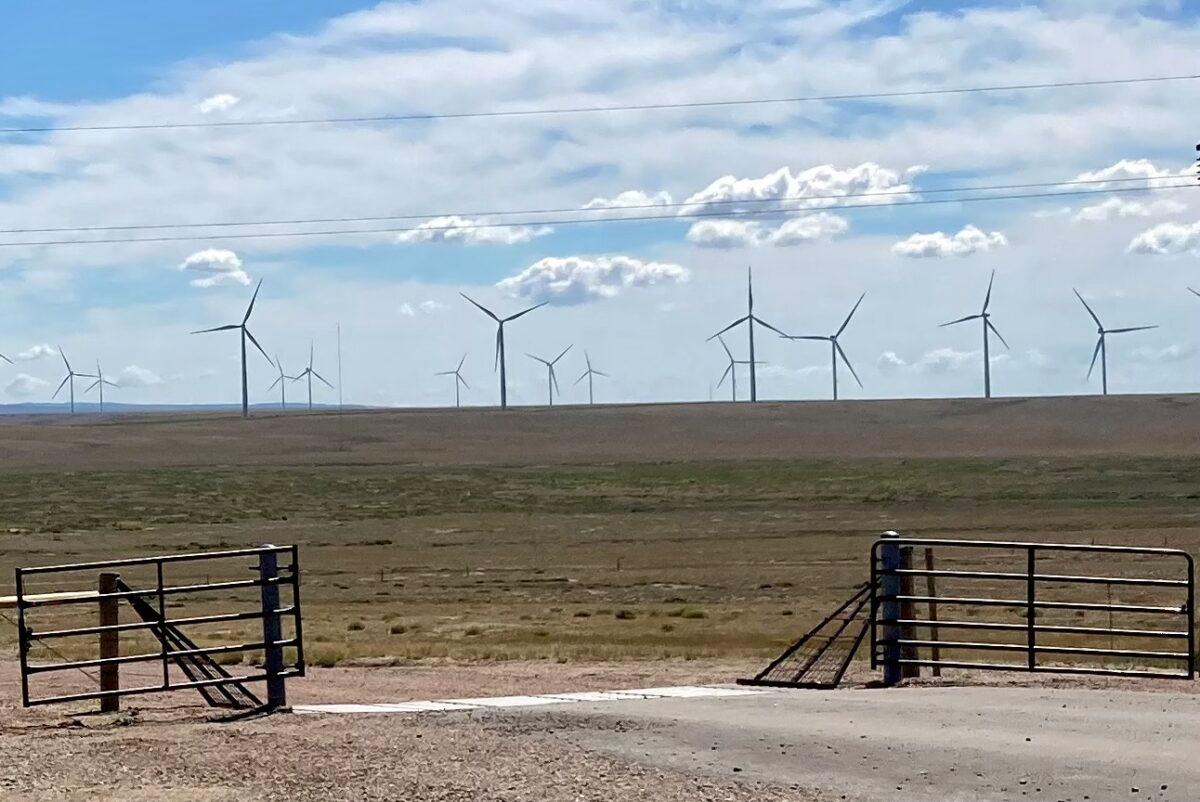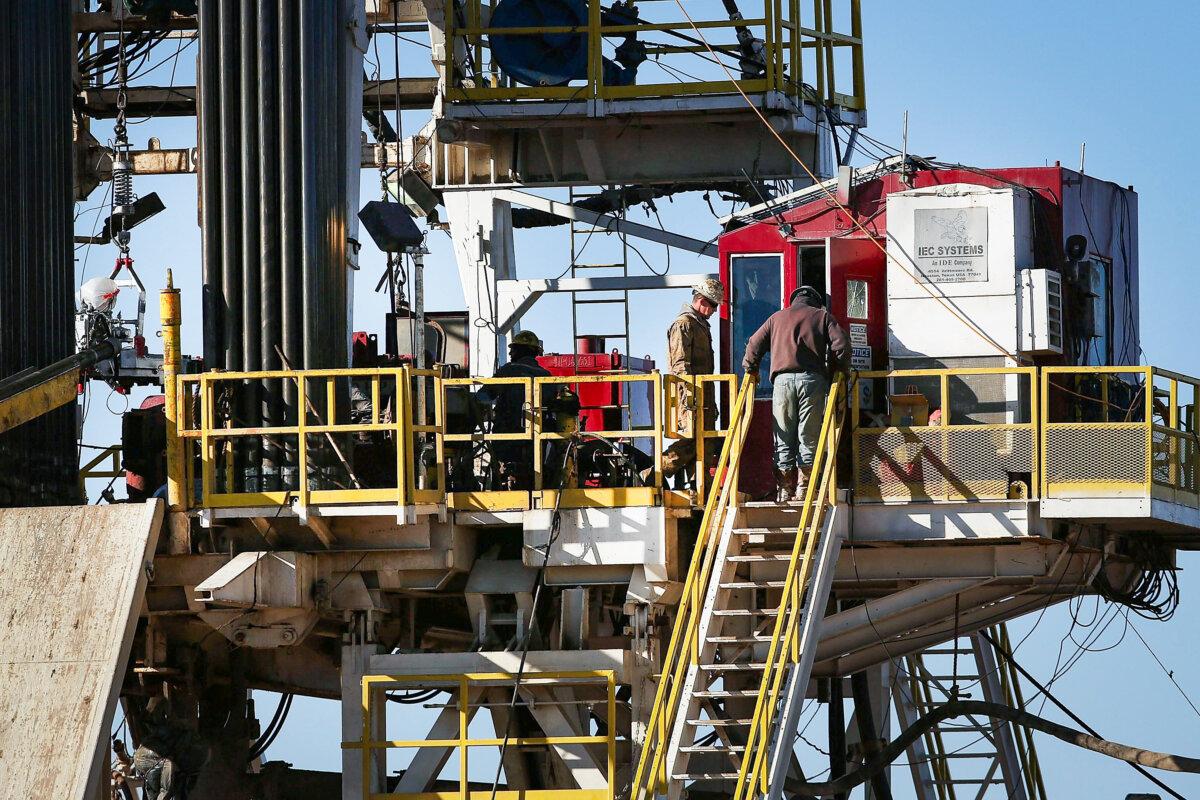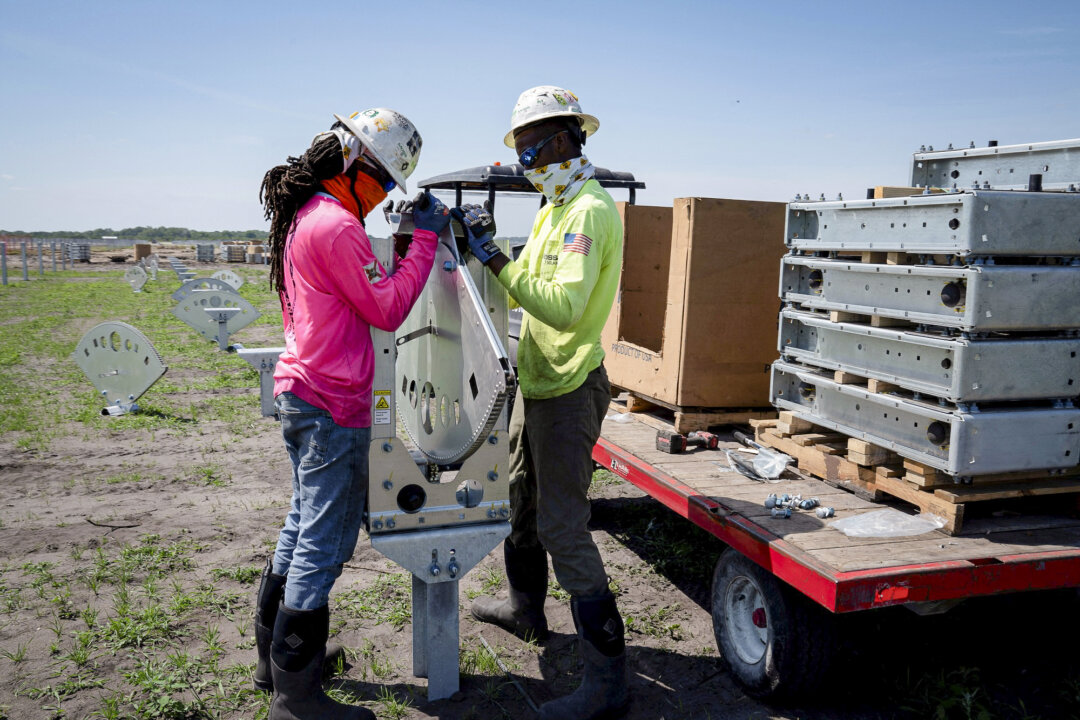The annual survey of utilities and 42,000 businesses found grid expansion and construction are fueling employment in solar, wind, and similar technologies.
“Clean energy” development accounted for 6 percent of all new employment in the United States in 2023, adding 142,000 jobs to the nation’s collective payroll, according to a U.S. Department of Energy (DOE) report released on Aug. 28.
The DOE’s 227 page 2024 U.S. Energy and Employment Report (USEER) states the nation’s overall energy workforce grew by more than 250,000 jobs, or 2 percent, in 2023 with 56 percent of those new jobs in clean energy—primarily solar, wind, and construction of related infrastructure.
The DOE said the report, an annual study established in 2016 to track employment trends in the energy sector, includes data from utilities and 42,000 businesses and documents a 4.2 percent hike in clean energy jobs.
“Our policies are working,” DOE Secretary Jennifer M. Granholm said in a statement announcing the USEER’s release.
“We are now starting to see the job impacts of investments made through the infrastructure and inflation reduction laws—first in construction and as America builds more of these factories, we’ll see hundreds of thousands more,” she said.
Institute for Energy Research President Tom Pyle—among those contacted by The Epoch Times who acknowledged they had not yet digested USEER specifics—said much of the clean energy job growth is underwritten by taxpayers “vis-a-vis subsidies, loan guarantees” and tax credits, including nearly $390 billion in 2022’s Inflation Reduction Act.
“I would hope and assume with all the billions of dollars the Biden-Harris administration is giving corporations that produce renewable energy, there would be some job growth,” he said.
Also, Pyle said, after the recent 28-percent downward adjustment in overall 2022 and 2023 employment numbers by the U.S. Department of Labor, he views job growth announcements from the federal government with skepticism.
DOE Deputy Secretary David Turk told reporters during a press call that overall energy job growth in 2023, especially in clean energy, “was driven by the utilities and construction sectors in particular—think new jobs building renewable energy and upgrading our grid.”
According to the department, 2023’s employment increased in all five USEER energy technology categories—electric power generation; energy efficiency; fuels; motor vehicles; and transmission, distribution, and storage—across all 50 states.
The report states the energy efficiency sector supported almost 2.3 million jobs in 2023, adding nearly 75,000 from the year before—the most of any sector.
According to the report, the fastest-growing area was the utilities sector, which saw 5 percent growth, adding 28,000 jobs.
The DOE said the private sector “continues to announce major investments in American-made energy” fostered by the Biden administration’s Investing in America (IIA) program.
A White House fact sheet tracks IIA state-by-state investments through June 2024.

In breaking out job growth geographically, the USEER states Idaho had the fastest rate of clean energy job growth, increasing by 7.7 percent.
The state’s IIA fact sheet notes there’s been $26.4 billion in private investment with $3.3 billion in federal incentives since 2022.
Texas and New Mexico—the nation’s two largest oil and natural gas-producing states—round out the top three in clean energy jobs created, according to the DOE.
The USEET said Texas clean energy jobs grew 6 percent. The Texas IIA Fact Sheet documents $153.2 billion in private and $34.2 billion in public investment.
New Mexico’s clean energy workforce added 5.9 percent more jobs. Its IIA Fact Sheet cites $8.2 billion in private and $5.7 billion in federal investment.
According to the USEER, solar and wind energy showed “strong job growth, jumping 5.3 percent and 4.5 percent respectively.”
The DOE projects solar and wind energy generation will double clean energy’s share of the nation’s electricity generation by 2030.
The report states nearly 90,000 jobs were created in 2023, a 4.5-percent increase and nearly double the overall 2.3-percent growth in construction jobs.

The 2023 report includes two new classifications—“unionization rate,” or union jobs compared to overall jobs, and clean energy infrastructure employment.
The report found 12.4 percent of 2023 added positions—most in construction and utilities—were union jobs, surpassing the overall 11-percent “unionization rate” across the sector.
“With union density in clean energy at record highs, it’s clear we can create good jobs and advance a cleaner economy at the same time,” AFL-CIO President Liz Shuler said in the DOE press release.
According to the department, Texas leads the nation with nearly 9.7 million employed in energy followed by California (932,273), Michigan (401,720), Florida (351,934), and Ohio (333,110).
In terms of clean energy, California’s 545,207 jobs are the most in any state. Texas (261,934), New York (177,202), Florida (172,115), and Illinois (130,473) round out the top five, the USEER reported.The report was lauded by, among others, the American Clean Power Association (ACP) and e2.org.
“Clean energy investments are spurring a manufacturing renaissance across America,” ACP said in an X post, noting more than 160 utility-scale manufacturing facilities have been announced since 2022 and highlighting its 2024 Clean Energy Investing In America report.
Washington-based e2.org noted since the Inflation Reduction Act’s August 2022 adoption, “companies have announced at least 334 major new clean energy and clean vehicle projects across the country.”
In its Aug. 14 report, e2.org estimates those new projects alone will create 109,278 jobs and garner $126 billion in private investments.
Pyle said to take the numbers with a grain of salt, noting basic job generation data is not the best metric to evaluate if clean energy investment is helping or hurting the economy.
“There may be fewer jobs being created in the oil and gas industry but the amount of energy that is produced” by one oil or gas job compared to one renewable energy job—or “energy density”—is significantly greater, he said.
“So the question is, there may be growing employment in certain sectors, but that doesn’t make it the most useful use of resources and of labor,” Pyle said.

